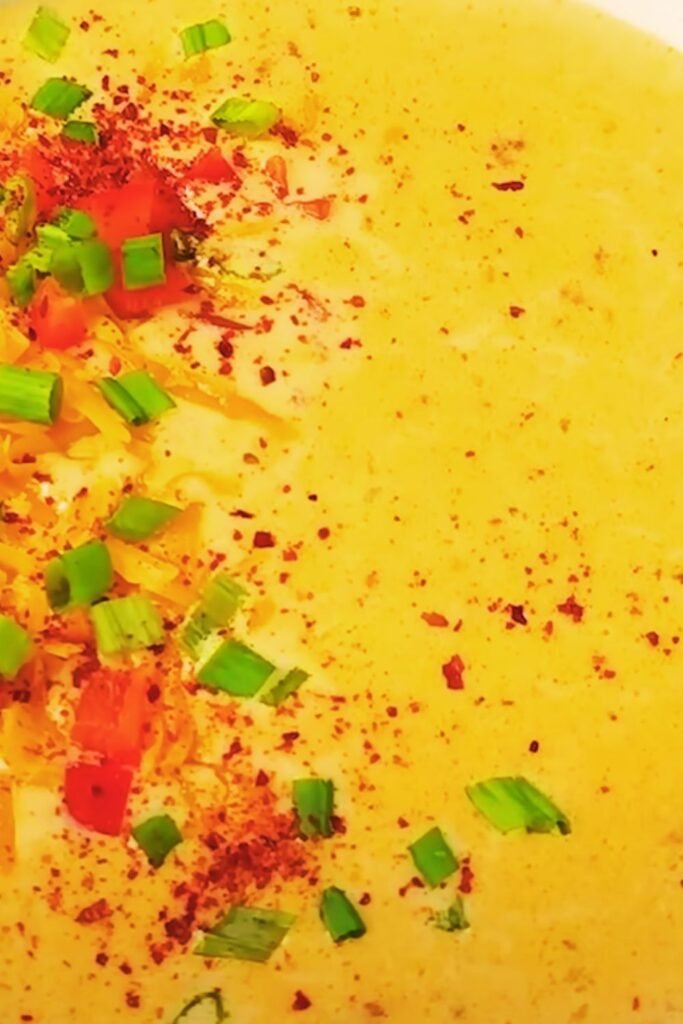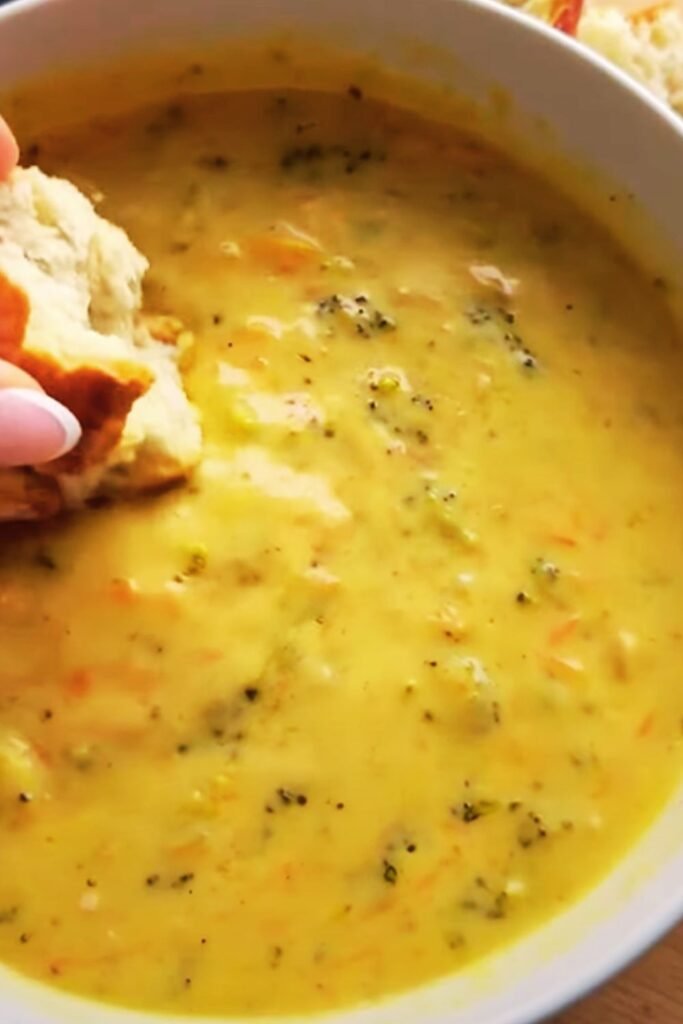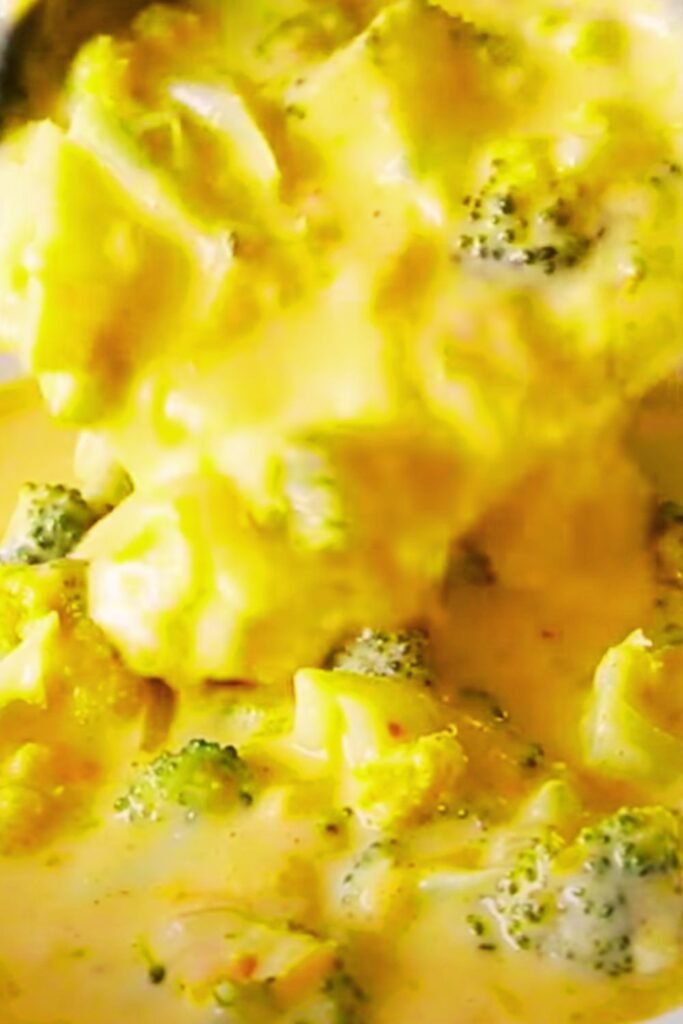I’ve been making soup for over a decade, and I can confidently say that beer cheese broccoli cheddar soup represents the pinnacle of comfort food perfection. This rich, creamy, and indulgent soup combines the earthy bitterness of beer with the sharp tang of aged cheddar, creating a flavor profile that’s both sophisticated and deeply satisfying.
When I first encountered this recipe at a local gastropub, I knew I had to recreate it at home. The combination of tender broccoli florets swimming in a velvety cheese sauce, enhanced by the complex flavors of beer, creates a soup that’s far more than the sum of its parts. It’s the kind of dish that transforms a simple weeknight dinner into something special, yet remains approachable enough for novice cooks to master.
Understanding the Magic Behind Beer Cheese Soup
The beauty of beer cheese broccoli cheddar soup lies in its harmonious balance of flavors and textures. The beer doesn’t just add alcohol content – it contributes depth, complexity, and a subtle bitterness that cuts through the richness of the cheese. When I select beer for this recipe, I look for varieties that complement rather than overpower the other ingredients.
Key Flavor Components:
- Beer base: Provides depth and helps balance the richness
- Sharp cheddar: Delivers the primary cheese flavor
- Broccoli: Adds texture, color, and nutritional value
- Aromatics: Onions, garlic, and herbs create the foundation
- Cream elements: Heavy cream and milk create the luxurious texture
The cooking process involves building layers of flavor, starting with aromatics, incorporating the beer to cook off the alcohol while retaining the flavor, then gradually adding dairy and cheese to create that perfect creamy consistency.
Essential Ingredients for Perfect Beer Cheese Broccoli Soup
Creating the perfect beer cheese broccoli cheddar soup requires careful attention to ingredient selection. I’ve learned through countless iterations that quality ingredients make an enormous difference in the final result.
Primary Ingredients
| Ingredient | Quantity | Quality Notes | Purpose |
|---|---|---|---|
| Fresh broccoli | 4 cups florets | Choose bright green, firm heads | Provides texture and nutrition |
| Sharp cheddar cheese | 3 cups shredded | Freshly grated preferred | Main cheese flavor |
| Beer | 12 oz bottle | Light lager or wheat beer | Adds depth and balances richness |
| Heavy cream | 1 cup | Full-fat essential | Creates creamy texture |
| Whole milk | 2 cups | Avoid low-fat versions | Base for the soup |
| Butter | 4 tablespoons | Unsalted preferred | For roux and richness |
| All-purpose flour | 1/4 cup | Fresh, not expired | Thickening agent |
| Yellow onion | 1 large | Sweet variety preferred | Aromatic base |
| Garlic | 3 cloves | Fresh, not powdered | Flavor enhancement |
Supporting Ingredients
- Chicken or vegetable broth: 2 cups for depth
- Worcestershire sauce: 1 tablespoon for umami
- Dijon mustard: 1 teaspoon for tang
- Paprika: 1/2 teaspoon for color and mild heat
- Fresh thyme: 1 tablespoon for herbaceous notes
- Bay leaves: 2 for aromatic depth
- Salt and pepper: To taste for seasoning

Step-by-Step Cooking Instructions
My approach to making beer cheese broccoli cheddar soup involves building flavors in layers, ensuring each component contributes to the overall harmony of the dish. I’ve refined this process over years of experimentation.
Preparation Phase
First, I prepare all ingredients before starting to cook. This mise en place approach ensures smooth cooking without rushed moments. I chop the onions finely, mince the garlic, cut the broccoli into uniform florets, and grate the cheese fresh. Fresh cheese melts more smoothly than pre-shredded varieties, which often contain anti-caking agents that can affect texture.
Building the Flavor Base
I begin by melting butter in a large, heavy-bottomed pot over medium heat. The heavy bottom prevents hot spots that could cause scorching. Once the butter foams and subsides, I add the diced onions and cook them until they become translucent, about 5-7 minutes. This process, known as sweating, releases the onions’ natural sugars and creates a sweet foundation for the soup.
Next, I add the minced garlic and cook for another minute until fragrant. Garlic burns quickly, so I keep the heat moderate and stir constantly. The aroma that fills the kitchen at this point always reminds me why I love cooking from scratch.
Creating the Roux
With the aromatics properly cooked, I sprinkle the flour over the onion mixture, stirring constantly to prevent lumps. This creates a roux, which will thicken the soup. I cook the roux for 2-3 minutes, stirring continuously, until it smells nutty and loses its raw flour taste. The color should be light golden.
Incorporating the Beer
Here’s where the magic begins. I slowly pour in the beer while whisking constantly. The mixture will bubble and foam initially – this is normal. I continue whisking until the mixture smooths out. Then I let it simmer for 3-4 minutes to cook off the alcohol while retaining the beer’s flavor compounds.
Adding Liquids and Vegetables
Gradually, I whisk in the chicken broth, ensuring no lumps form. Then I add the milk, whisking until smooth. I bring the mixture to a gentle simmer and add the broccoli florets, bay leaves, and thyme. The soup should simmer gently – vigorous boiling can cause the dairy to curdle.
I cook the broccoli until it’s tender but still has a slight bite, about 8-10 minutes. Overcooked broccoli becomes mushy and loses its vibrant color.
Final Enrichment
With the broccoli perfectly cooked, I reduce the heat to low and slowly whisk in the heavy cream. Then comes the most crucial part – adding the cheese. I add it in small handfuls, whisking constantly and allowing each addition to melt completely before adding more. This gradual process prevents the cheese from seizing up and becoming grainy.

Perfecting Texture and Consistency
Achieving the perfect texture in beer cheese broccoli soup requires attention to several key factors. I’ve learned that temperature control is absolutely crucial – too high heat will cause the dairy to separate and the cheese to become stringy.
Temperature Management
I maintain the soup at a gentle simmer throughout the cooking process. If the soup begins to boil vigorously, I immediately reduce the heat. The ideal temperature keeps the soup just below a rolling boil, with small bubbles occasionally breaking the surface.
Thickness Adjustments
Sometimes the soup needs consistency adjustments. If it’s too thick, I gradually whisk in additional warm milk or broth. If it’s too thin, I create a slurry by mixing equal parts flour and cold water, then whisking this mixture into the simmering soup. I let it cook for several minutes to eliminate any raw flour taste.
Preventing Separation
Dairy-based soups can separate if not handled properly. I prevent this by:
- Never boiling the soup once dairy is added
- Adding cheese gradually and off heat when possible
- Using full-fat dairy products
- Whisking constantly during cheese incorporation
Advanced Techniques and Variations
Over the years, I’ve developed several techniques that elevate this soup from good to exceptional. These methods require a bit more effort but deliver restaurant-quality results.
Cheese Selection and Preparation
While sharp cheddar forms the base, I sometimes blend in other cheeses for complexity. A small amount of smoked gouda adds depth, while a touch of cream cheese ensures ultra-smooth texture. I always grate cheese fresh from the block – pre-shredded cheese contains additives that can prevent smooth melting.
Beer Selection Guide
| Beer Type | Flavor Profile | Best For |
|---|---|---|
| Light Lager | Clean, crisp, mild | Subtle beer flavor |
| Wheat Beer | Smooth, slightly sweet | Creamy texture |
| Pale Ale | Hoppy, citrusy | Bold flavor contrast |
| Porter | Dark, rich, complex | Hearty winter version |
Broccoli Preparation Options
I’ve experimented with various broccoli preparations:
- Fresh florets: Classic choice, maintains texture
- Frozen broccoli: Convenient, but drain thoroughly
- Broccoli stems: Don’t waste them – peel and dice for extra nutrition
- Roasted broccoli: Pre-roast for deeper flavor

Troubleshooting Common Issues
Even experienced cooks encounter challenges with this soup. I’ve faced most problems myself and developed solutions through trial and error.
Grainy or Separated Cheese
Problem: Cheese appears grainy or the soup looks separated Solution: Remove from heat immediately, whisk in a small amount of cold milk, then return to very low heat while whisking constantly
Too Thick or Too Thin
Problem: Soup consistency isn’t right Solution: For thick soup, gradually add warm broth. For thin soup, make a flour slurry (equal parts flour and cold water) and whisk into simmering soup
Bitter Taste
Problem: Soup tastes overly bitter Solution: This usually indicates the beer wasn’t cooked long enough. Add a pinch of sugar and a splash of cream to balance flavors
Bland Flavor
Problem: Soup lacks depth Solution: Add more Worcestershire sauce, a touch of hot sauce, or additional seasoning. Sometimes a splash of lemon juice brightens the entire dish
Nutritional Information and Health Considerations
While beer cheese broccoli soup isn’t exactly a health food, it does provide significant nutritional value when enjoyed as part of a balanced diet. I’ve analyzed the nutritional content to help you make informed decisions.
Nutritional Breakdown (Per Serving)
| Nutrient | Amount | % Daily Value |
|---|---|---|
| Calories | 420 | 21% |
| Total Fat | 28g | 36% |
| Saturated Fat | 17g | 85% |
| Cholesterol | 85mg | 28% |
| Sodium | 980mg | 43% |
| Total Carbs | 18g | 7% |
| Dietary Fiber | 3g | 11% |
| Protein | 20g | 40% |
| Vitamin C | 89mg | 99% |
| Calcium | 520mg | 40% |
Health Benefits
Despite its indulgent nature, this soup offers several nutritional benefits:
- High protein content from cheese and milk supports muscle health
- Significant calcium contributes to bone strength
- Vitamin C from broccoli supports immune function
- Folate and fiber from broccoli aid digestion and cellular health
Lighter Variations
For those seeking a lighter version, I’ve developed modifications:
- Use low-fat milk instead of whole milk
- Reduce cheese quantity by one-third
- Add extra vegetables like cauliflower or carrots
- Use Greek yogurt to replace some of the heavy cream
Storage and Reheating Guidelines
Proper storage ensures you can enjoy this soup for several days after making it. I’ve learned specific techniques that maintain quality during storage and reheating.
Refrigeration
I store leftover soup in the refrigerator for up to 4 days. The key is cooling it quickly to prevent bacterial growth. I divide large batches into smaller containers to speed cooling. Before storing, I let the soup cool to room temperature, then refrigerate immediately.
Freezing Considerations
While possible, freezing dairy-based soups presents challenges. The texture may change upon thawing, becoming grainy or separated. If I must freeze it, I do so without the cream, adding fresh cream when reheating.
Reheating Techniques
Reheating requires gentle heat to prevent separation. I use low heat and stir frequently. If the soup appears separated, I whisk vigorously while heating. Sometimes adding a splash of fresh milk helps restore smooth texture.
Serving Suggestions and Pairings
The rich, creamy nature of beer cheese broccoli soup pairs beautifully with various accompaniments. I’ve discovered combinations that complement rather than compete with the soup’s bold flavors.
Bread Pairings
- Crusty sourdough: The tangy flavor cuts through richness
- Garlic bread: Classic comfort food pairing
- Cornbread: Adds sweetness and texture contrast
- Pretzel rolls: Echoes the beer theme
Salad Combinations
A crisp salad provides textural contrast:
- Simple green salad with vinaigrette
- Apple and walnut salad for sweetness
- Coleslaw for crunch and acidity
Protein Additions
For a heartier meal, I sometimes add:
- Crispy bacon bits for smokiness
- Grilled chicken for extra protein
- Ham cubes for saltiness
Seasonal Adaptations
I’ve adapted this recipe for different seasons, incorporating seasonal ingredients and adjusting preparation methods based on weather and availability.
Fall Variations
During autumn, I add:
- Roasted butternut squash for sweetness
- Sage and rosemary for earthy flavors
- Pumpkin puree for extra richness
Winter Enhancements
Cold weather calls for heartier versions:
- Root vegetables like carrots and parsnips
- Heartier beer like porter or stout
- Extra herbs like oregano and marjoram
Spring Lightening
As weather warms, I lighten the soup:
- Fresh herbs like chives and parsley
- Lighter beer like wheat beer
- Additional vegetables like asparagus
Q&A Section
Q: Can I make this soup vegetarian? I absolutely can make this soup vegetarian by using vegetable broth instead of chicken broth. The flavor remains rich and satisfying. I sometimes add a tablespoon of nutritional yeast for extra umami depth.
Q: What’s the best beer to use for this soup? I prefer light lagers or wheat beers for their mild flavor that won’t overpower the cheese. Avoid hoppy IPAs or very dark beers unless you specifically want those strong flavors. The beer should complement, not dominate.
Q: Can I use frozen broccoli instead of fresh? Yes, but I recommend thawing and draining frozen broccoli thoroughly before adding it to the soup. Frozen broccoli releases more water, which can thin the soup. I add it during the last 5 minutes of cooking since it’s already partially cooked.
Q: How do I prevent the cheese from becoming stringy? The key is temperature control and gradual addition. I remove the pot from heat before adding cheese, add it in small amounts while whisking constantly, and keep the temperature below boiling once cheese is added.
Q: Can I make this soup ahead of time? I can prepare the soup base (everything except the cheese and cream) up to two days ahead. When ready to serve, I gently reheat the base and add the cheese and cream. This prevents the dairy from breaking down during storage.
Q: What should I do if my soup curdles? If the soup curdles, I immediately remove it from heat and whisk in cold milk or cream. Sometimes blending a portion of the soup smooth and whisking it back in helps restore texture. Prevention is easier than fixing, so I maintain gentle heat throughout cooking.
Q: How can I make this soup spicier? I add heat gradually – a pinch of cayenne pepper, a dash of hot sauce, or fresh jalapeños diced finely. I start with small amounts since the dairy will amplify heat. Smoked paprika adds warmth without excessive spice.
Q: Is it normal for the soup to thicken significantly when cooled? Yes, this is completely normal. The starches and dairy cause the soup to thicken as it cools. When reheating, I add a little milk or broth to restore the desired consistency.
Q: Can I use different types of cheese? I can experiment with cheese blends, but I keep cheddar as the primary cheese for its sharp flavor and melting properties. Good additions include gruyere, fontina, or a small amount of parmesan. I avoid cheeses that don’t melt smoothly.
Q: How do I know when the soup is done cooking? The soup is done when the broccoli is tender but still has a slight bite, the cheese is fully melted and incorporated, and the consistency is creamy without being too thick. The flavors should be well-balanced with no raw flour taste.
This beer cheese broccoli cheddar soup represents everything I love about comfort food cooking – it’s rich, satisfying, and brings people together around the table. The combination of techniques I’ve shared will help you create a soup that’s worthy of any special occasion, yet simple enough for a weeknight dinner. Each bowl delivers warmth, comfort, and the kind of satisfaction that only comes from a perfectly executed homemade soup.